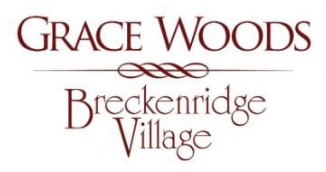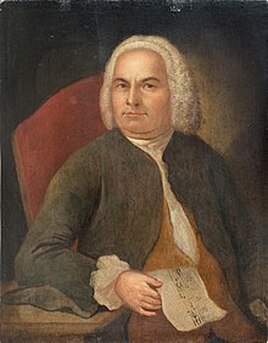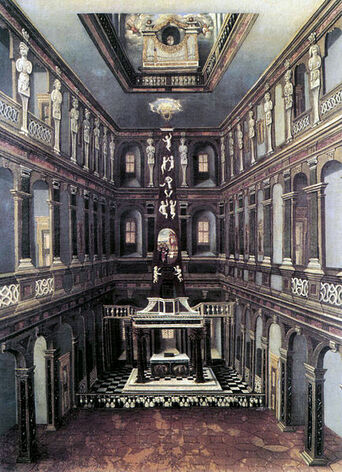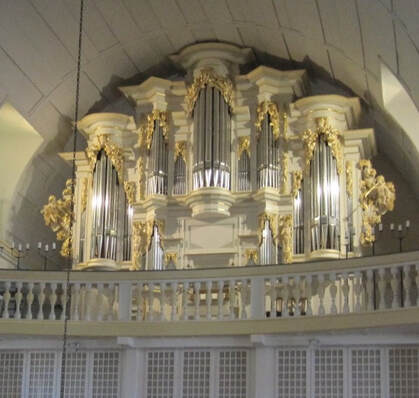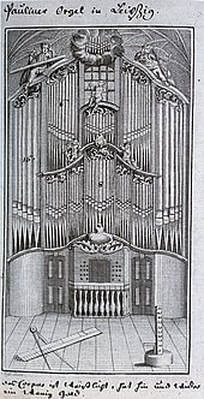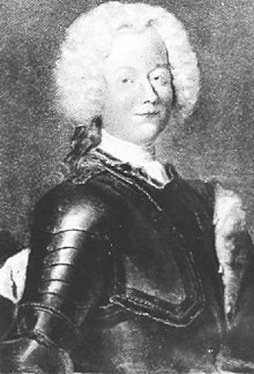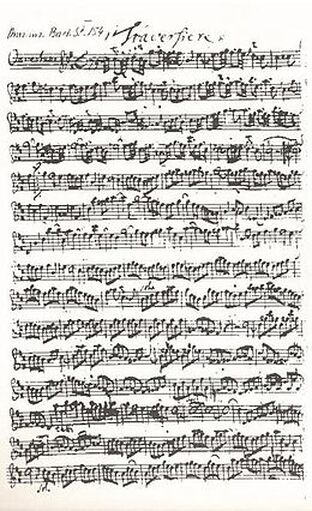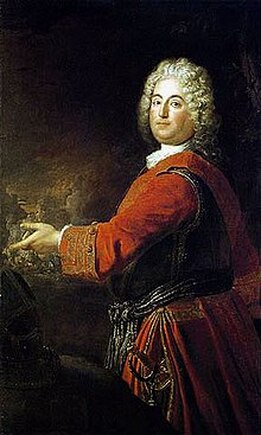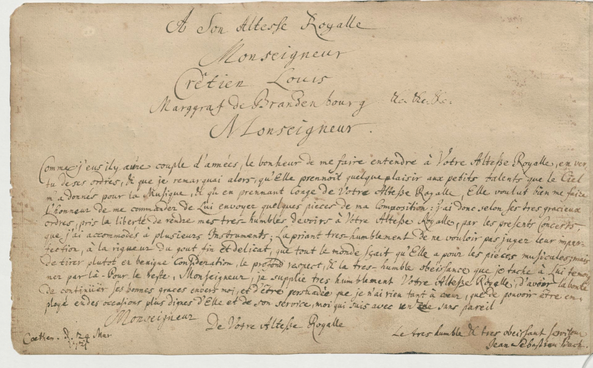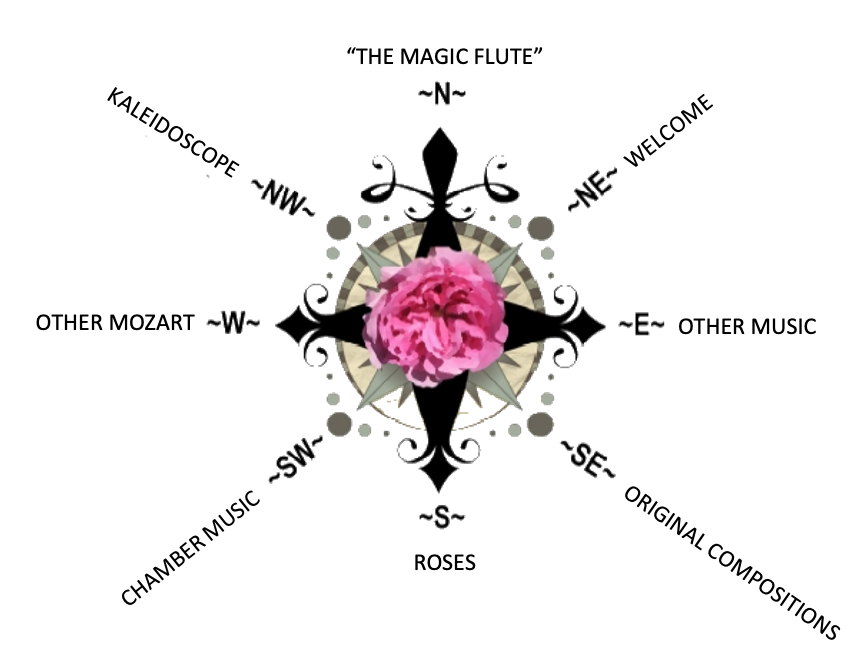- Home
- N - The Magic Flute
- NE - Welcome!
-
E - Other Music
- E - Music Genres >
- E - Composers >
-
E - Extended Discussions
>
- Allegri: Miserere
- Bach: Cantata 4
- Bach: Cantata 8
- Bach: Chaconne in D minor
- Bach: Concerto for Violin and Oboe
- Bach: Motet 6
- Bach: Passion According to St. John
- Bach: Prelude and Fugue in B-minor
- Bartok: String Quartets
- Brahms: A German Requiem
- David: The Desert
- Durufle: Requiem
- Faure: Cantique de Jean Racine
- Faure: Requiem
- Handel: Christmas Portion of Messiah
- Haydn: Farewell Symphony
- Liszt: Évocation à la Chapelle Sistine"
- Poulenc: Gloria
- Poulenc: Quatre Motets
- Villa-Lobos: Bachianas Brazilieras
- Weill
-
E - Grace Woods
>
- Grace Woods: 4-29-24
- Grace Woods: 2-19-24
- Grace Woods: 1-29-24
- Grace Woods: 1-8-24
- Grace Woods: 12-3-23
- Grace Woods: 11-20-23
- Grace Woods: 10-30-23
- Grace Woods: 10-9-23
- Grace Woods: 9-11-23
- Grace Woods: 8-28-23
- Grace Woods: 7-31-23
- Grace Woods: 6-5-23
- Grace Woods: 5-8-23
- Grace Woods: 4-17-23
- Grace Woods: 3-27-23
- Grace Woods: 1-16-23
- Grace Woods: 12-12-22
- Grace Woods: 11-21-2022
- Grace Woods: 10-31-2022
- Grace Woods: 10-2022
- Grace Woods: 8-29-22
- Grace Woods: 8-8-22
- Grace Woods: 9-6 & 9-9-21
- Grace Woods: 5-2022
- Grace Woods: 12-21
- Grace Woods: 6-2021
- Grace Woods: 5-2021
- E - Trinity Cathedral >
- SE - Original Compositions
- S - Roses
-
SW - Chamber Music
- 12/93 The Shostakovich Trio
- 10/93 London Baroque
- 3/93 Australian Chamber Orchestra
- 2/93 Arcadian Academy
- 1/93 Ilya Itin
- 10/92 The Cleveland Octet
- 4/92 Shura Cherkassky
- 3/92 The Castle Trio
- 2/92 Paris Winds
- 11/91 Trio Fontenay
- 2/91 Baird & DeSilva
- 4/90 The American Chamber Players
- 2/90 I Solisti Italiana
- 1/90 The Berlin Octet
- 3/89 Schotten-Collier Duo
- 1/89 The Colorado Quartet
- 10/88 Talich String Quartet
- 9/88 Oberlin Baroque Ensemble
- 5/88 The Images Trio
- 4/88 Gustav Leonhardt
- 2/88 Benedetto Lupo
- 9/87 The Mozartean Players
- 11/86 Philomel
- 4/86 The Berlin Piano Trio
- 2/86 Ivan Moravec
- 4/85 Zuzana Ruzickova
-
W - Other Mozart
- Mozart: 1777-1785
- Mozart: 235th Commemoration
- Mozart: Ave Verum Corpus
- Mozart: Church Sonatas
- Mozart: Clarinet Concerto
- Mozart: Don Giovanni
- Mozart: Exsultate, jubilate
- Mozart: Magnificat from Vesperae de Dominica
- Mozart: Mass in C, K.317 "Coronation"
- Mozart: Masonic Funeral Music,
- Mozart: Requiem
- Mozart: Requiem and Freemasonry
- Mozart: Sampling of Solo and Chamber Works from Youth to Full Maturity
- Mozart: Sinfonia Concertante in E-flat
- Mozart: String Quartet No. 19 in C major
- Mozart: Two Works of Mozart: Mass in C and Sinfonia Concertante
- NW - Kaleidoscope
- Contact
JOHANN SEBASTIAN BACH (1685-1750)
by Judith Eckelmeyer
(GRACE WOODS MUSIC SESSION APRIL 17, 2023)
Bach had been primarily employed in churches as a singer and an organist from his mid-teens up through his time as court organist and member of the court orchestra in Weimar (1708-1717); he was also a talented violinist.
During these years in service to Wilhelm Ernst, Duke of Weimar, he expanded his reputation as an extraordinary organist to include his talent as an evaluator of new organs, and as a composer not only of organ and church music but also of orchestral music.
However, it was in his years of service in Cöthen, 1708 to 1718, that he had the opportunity and means to really expand his composition for instruments other than organ.
His employer there, Prince Leopold was a Calvinist, on which account there was not only no elaborate music but also a very limited organ which would not have supported the style of Bach’s music. But the prince had begun to build an orchestra the year before Bach arrived, and continued to add talented instrumentalists to the ensemble during Bach’s tenure there. So it was in Cöthen that Bach wrote a good number of instrumental music—for soloists, for ensembles, and as pedagogical works for his second wife, Anna Maria, and his children.
The first and fourth of the four “Overtures”—i.e. Orchestral Suites—come from Bach’s time in Cöthen (the other two from his Leipzig career).
All four follow a well-established tradition begun in France in the second half of the 17th century, when Jean-Baptiste Lully (1632-1687) extracted ballet music from his operas and arranged them as a suite of dances. They share several features: an overture in the French style (slow with dotted rhythms, fast and contrapuntal, slow again); they exploit the skills of the Cöthen instumentalists, and they all are comprised of various dances of the era. But the instrumental makeup and the specific dances in each differ markedly.
Suite No. 3, in D major, is for three trumpets, 2 oboes, timpani, strings and continuo. It is thought that Bach composed it between 1729 and 1730. Following the Overture are an Air, Gavotte I, Gavotte II, Bourée, and Gigue. All are in a 2-part structure: the first part cadences and then is repeated, often with added ornaments, and then the second part, also repeated and with added ornaments. The dance rhythms are clearly evident. The moderately paced gavotte, usually using four beats, begins with two “up-beats” (i.e. unaccented) before the first, accented, beat of the following measure. The Bourée is also in 2 or 4 beats but is faster than the Gavotte and begins on only 1 “up-beat”. The Gigue in this suite is in a lively 2, each main beat having 3 equal parts: ^ - - ^ - - . The famous Air is not so much a dance as a gentle, lyrical song but follows the structural pattern of a dance.
Bach's Orchestral Suite No. 3 in D major, BWV 1068
Netherlands Bach Society
Netherlands Bach Society
Probably the most important set of concertos by Bach are the six “Brandenburg Concertos”. Bach wrote them over a period from 1708 to 1718, while he worked in Weimar and then Cöthen.
Their name as a set comes from Bach’s having packaged them as a kind of job application to Christian Ludwig, the Margrave of Brandenburg, in 1721.
Even though Bach wrote a florid dedication to the Margrave at the beginning of the set, the Margrave never responded to Bach—it seems he didn’t even open the gift—and Bach took a new job in Leipzig instead.
Maybe it’s just as well. Bach had the services of an exceptional group of musicians in Cöthen and wrote for their capabilities (and his own, since he probably performed at the keyboard with them), and very likely Christian Ludwig’s court would not have had the variety and technically superior forces to perform the spectacularly demanding music represented in these concertos.
Like the Orchestral Suites, each of these concertos has its unique instrumentation, some richer than others, and some functioning more like suites of dances than true concertos. Such is the case for Concertos 1, a hybrid suite/concerto grosso in F major, and 2, also a concerto grosso and also First movement with a in F major. (That there are multiple solo instruments rather than a single featured soloist means they are “grand concertos”—concerti grossi.)
The first movement of Concerto 1 is written for 2 horns, 3 oboes, bassoon, violin piccolo (a small-sized violin tuned higher than the regular violin). The first movement is untitled but is construed to be an Allegro in the Italian first-movement format Bach learned from Vivaldi’s music. It begins with a well-defined theme played by all the instruments except timpani, but then soloists or small groups of instruments present “spin-off” ideas; the first theme keeps returning (so it’s called a ritornello) between the soloists’ episodes. The second movement is slow and lyrical, featuring various solosts. The third movement is marked Allegro and suggests a gigue even though laid out as a complete Vivaldian 3-movement concerto in miniature. And finally we get actual dance movements: a Menuetto (with Trio) and a Polacca (with Trio). The Polacca in 3, is for strings alone, but without the violin piccolo; but the Trio, in duple meter, is a trio for two horns in duet with all the oboes as the third “voice”. The Polacca is then repeated.
Bach's Brandenburg Concerto No. 1 in F Major, BWV 1046: I Allegro
Apollo's Fire | Jeannette Sorrell, conductor
Apollo's Fire | Jeannette Sorrell, conductor
Concerto 2 is more conventional in layout: 3 movements in fast, slow, then fast tempos.
The instrumentation, though, is very unusual. The body of strings (the full or ripieno group) consists of 2 violin parts, a viola part, a violone (think bass viol) part, and a cello part with continuo. There are 4 solo instruments (the concertino or little ensemble): “indoor” violin and recorder, and “outdoor” trumpet and oboe. Throughout the first and third movement Bach mixes and matches the four soloists; it’s interesting to hear how the “outdoor” soloists do not outshout the “indoor” instruments! The second, slow, movement eliminates the trumpet, but it comes roaring (?) back to begin the third movement. It’s a remarkable concerto!
The instrumentation, though, is very unusual. The body of strings (the full or ripieno group) consists of 2 violin parts, a viola part, a violone (think bass viol) part, and a cello part with continuo. There are 4 solo instruments (the concertino or little ensemble): “indoor” violin and recorder, and “outdoor” trumpet and oboe. Throughout the first and third movement Bach mixes and matches the four soloists; it’s interesting to hear how the “outdoor” soloists do not outshout the “indoor” instruments! The second, slow, movement eliminates the trumpet, but it comes roaring (?) back to begin the third movement. It’s a remarkable concerto!
Bach's Brandenburg Concerto No. 2 in F Major, BWV 1047: I Allegro
Apollo's Fire | Jeannette Sorrell, conductor
Apollo's Fire | Jeannette Sorrell, conductor
Bach's Brandenburg Concerto No. 2 in F Major, BWV 1047: II Andante
Apollo's Fire | Jeannette Sorrell, conductor
Apollo's Fire | Jeannette Sorrell, conductor
Bach's Brandenburg Concerto No. 2 in F Major, BWV 1047: III Allegro assai
Apollo's Fire | Jeannette Sorrell, conductor
Apollo's Fire | Jeannette Sorrell, conductor
Bach's Brandenburg Concertos (complete)
Orchestra of the Age of Enlightenment
Orchestra of the Age of Enlightenment
|
Concerto nº1 in F major BWV 1046
1. (no tempo indication) 2. Adagio 3. Allegro 4. Menuetto-Trio I-Polacca-Trio II Concerto nº2 in F major BWV 1047 5. (no tempo indication) 6. Andante 7. Allegro assai Concerto nº3 in G major BWV 1048 8. (no tempo indication) 9. Adagio - Allegro Concerto nº4 in G major BWV 1049 10. Allegro 11. Andante 12. Presto Concerto nº5 in D major BWV 1050 13. Allegro 14. Affettuoso 15. Allegro Concerto nº6 in B flat major BWV 1051 16. (no tempo indication) 17. Adagio ma non tanto 18. Allegro |
Judith Eckelmeyer © 2023
Choose Your Direction
The Magic Flute, II,28.
